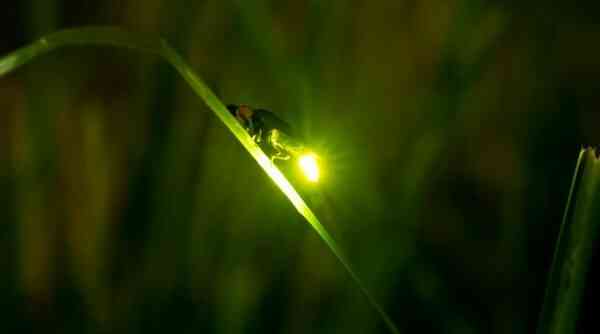Amazing firefly insects differ from most other creatures on Earth in their ability to glow, from where, in fact, their name comes from. This interesting and unusual property did not go unnoticed, and in various ancient cultures, fireflies were sometimes mistaken for spirits, sometimes for other manifestations of otherworldly forces. They are indeed very curious, especially when there are many of them – thousands of fireflies circling in the night sky look truly incredible.
Interesting facts about fireflies
- The luminous organs of these amazing creatures are called lanterns.
- In some species of fireflies, not only adults, but also larvae and eggs glow.
- Some fireflies glow on their own, while others need to be disturbed by a light touch to make them glow.
- In a firefly, the light consists entirely of the energy produced by the body of this insect (interesting facts about insects).
- For comparison, when a light bulb burns, only 90% of the light comes from, because 10% goes to heat. But when a fluorescent lamp burns, only 70% is light, and 30% is heat generation. In a firefly, all 100% of the energy goes into light.
- Different types of fireflies glow in their own way. At the same time, some glow constantly, while others flicker periodically.
- Glow is also important for their reproduction. Females glow in the foliage of trees and shrubs, waiting for males. The latter, as they approach them, also begin to emit light signals.
- Light helps fireflies avoid predators – by flickering, they produce bitter chemicals in their body, and hunters already know that it is not worth catching a burning firefly because they won’t like it anymore.
- Fireflies are easy to identify by a certain rhythm of glow. One species creates a J-shaped flash, and its flight path resembles an arc. The other flies in a straight line and flashes every three to eight seconds. The third flashes twice every five seconds, the fourth flashes three times in two to three seconds, and so on.
- By glowing, scientists can immediately recognize what kind of firefly is in front of them.
- While the adults of most firefly species feed on pollen or smaller insects, the females of the Photuris species prey on the males of other species. At the same time, they emit light that mimics the glow of the females of the species they prey on.
- Many people think that the light coming from fireflies can only be green or greenish-yellow, but this is not entirely true. There are fireflies that emit orange or blue light. Some of those that emit a blue glow do not flicker, but are constantly lit throughout the night.
- There are also species of these insects that do not glow at all.
- Fireflies glow because their body contains chemicals and enzymes such as calcium, adenosine triphosphate, luciferin and luciferase, resulting in a bioluminescent chemical reaction.
- These insects can control the glow by adding oxygen at the very beginning of the process in order to start a chemical reaction in an organ that produces light (interesting facts about oxygen).
- Fireflies can save a person’s life. Scientists have found that the luciferin found in their bodies can be used to detect blood clots in the body, which is important when using cancer drugs. However, more recently, scientists have learned how to create a synthetic luciferase, which means that the medical industry no longer needs to obtain this bioluminescent chemical from fireflies.
- Fireflies have very little life – only summer. They spend most of their lives looking for a partner. Once this happens, the females lay their eggs and die. The larvae emerge the following spring and the life cycle repeats.
